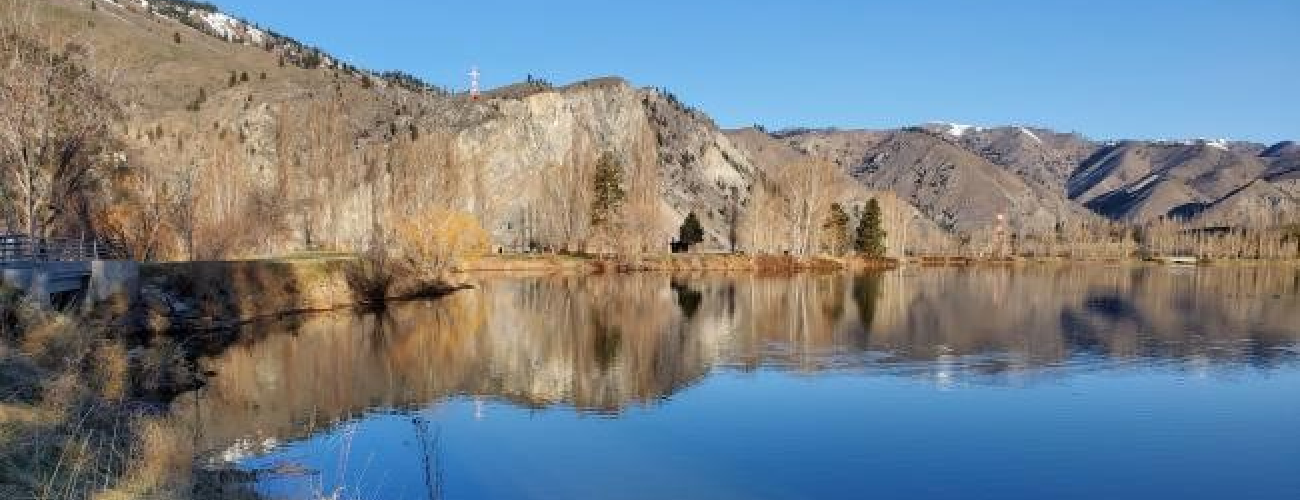Daroga State Park History
Daroga State Park is a popular recreation area that provides access to Lake Entiat, the reservoir created by Rocky Reach Dam.
Indigenous Lands
The park lies within the traditional territories of Interior Salish Indigenous people whose present-day descendants include members of the Confederated Tribes and Bands of the Yakama Nation and the Confederated Tribes of the Colville Reservation. For thousands of years this area has provided habitat for a diverse community of life that forms the basis of their cultures. Traditionally, the Indigenous people of the region left winter residences along the Columbia River in the spring to travel to various river and plateau areas to collect, hunt and fish on seasonal rounds. The river has long served as the primary transportation corridor in the region as well as the source of salmon, a mainstay of Indigenous food and culture. The story of Coyote Bringing Salmon to the People is a foundational narrative for Indigenous residents of the region.
Some tribal representatives ceded ownership of the area to the US federal government under duress in the Yakima Treaty of Camp Stevens in 1855, keeping rights to harvest natural resources in their usual and accustomed places, including the Columbia River. Other tribes and bands such as the Columbia-Moses (Sinkayuse) were subjected to a series of executive orders by US Presidents that established and dissolved reservation areas and ultimately relinquished ownership of their homelands to the US federal government.
Government surveys were completed in 1884 and the land in today’s Daroga State Park passed into private ownership when it was granted to the Northern Pacific Railway (NP) on May 8, 1896, part of nearly 40 million acres of public lands granted to the railroad by the federal government to finance the construction of the line. As with most of its granted lands, the NP sold this parcel to another private landowner.
The Night the River Ran Dry
At 9:40 pm on December 14, 1872, a powerful earthquake jolted the area of today’s Daroga State Park. The force of the shaking caused a massive rockfall from the face of Ribbon Cliff and Earthquake Point, just across the water from the park. The volume of rock thrown into the river was so great that the entire flow of the river was stopped for several hours. It was reported that some women who went to collect water for the Miller & Freer trading post downstream at the Wenatchee River confluence the next morning found the Columbia River bed entirely dry. While there they saw in the distance a rush of water headed toward them. They ran for their lives and escaped.
In 2014, geologists located the likely source of the quake, a fault scarp in Spencer Canyon about six miles south of Ribbon Cliff and Earthquake Point.
The Auvil Brothers Orchard
David, Robert and Grady Auvil established an orchard that included the site of today’s park in 1928. The Auvil brothers were innovative growers, pioneering commercial production of several fruit varieties that went on to become important crops including Red Haven peaches, Rainier cherries and Granny Smith apples. When the Lake Entiat reservoir began to fill behind Rocky Reach Dam in the 1950’s, they sold the land to the Chelan County Public Utility District (PUD) and moved their orchard operations to higher ground.
Rocky Reach Dam
Rocky Reach Dam impounds the Columbia River 14 miles downstream from Daroga State Park. Chelan County PUD oversaw construction of the dam beginning in 1956. The first seven generating units came online on November 1, 1961. Four more turbines were completed on December 1, 1971. Its 11 hydroelectric turbines provide power to residential and commercial customers throughout the Pacific Northwest. As a mitigation for the impact the dam causes to migrating fish, a juvenile fish bypass system was added to the project in 2003 to help young salmon and steelhead on their way to the ocean. The dam’s reservoir, known as Lake Entiat, covers nearly 9,000 acres and is popular for boating and salmon, trout and bass fishing. High-voltage power lines that are used to distribute hydroelectric power in the regional grid pass overhead in the park, producing an audible sizzle.
Making A State Park
The Federal Energy Regulatory Commission required the PUD to “arrange for the construction, maintenance and operation of recreational facilities” as a condition of approving the license for operating Rocky Reach Dam.
On April 26, 1990, the Washington State Parks and Recreation Commission entered into a lease and operating agreement to manage the park built by the PUD. The park was dedicated in September 1990 and officially named Daroga State Park, a name derived from the first names of the Auvil brothers (David, Robert, Grady).
Sharing the histories of Washington’s state parks is an ongoing project. Learn more here.

